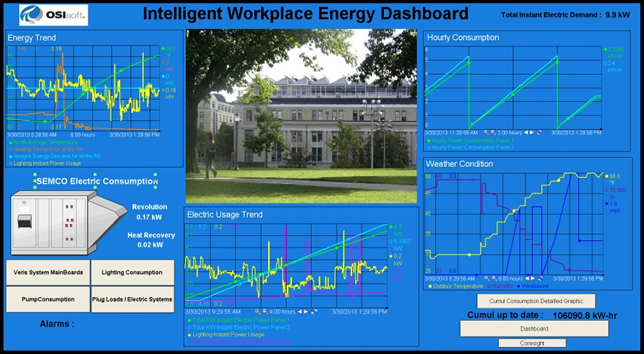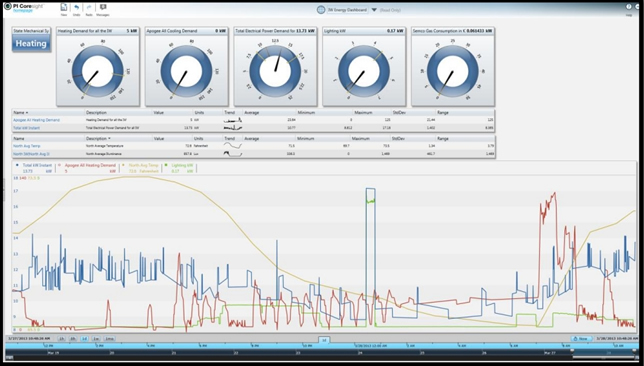Carnegie Mellon Manages Energy Usage with Predictive Analytics
- By Dian Schaffhauser
- 10/09/14
Carnegie Mellon University has found that helping users change their behaviors regarding energy usage involves giving them information in an integrated form, monitoring building performance and making real-time data accessible and visible. The findings grew out of a predictive analytics project by the Center for Building Performance and Diagnostics, a degree program and research center in the School of Architecture that studies advanced building technologies and designs as a way to improve "total-building" efficiency and performance.
An initial experiment is monitoring nine buildings outfitted with hundreds of sensors feeding data from multiple building systems: heating, cooling, ventilation, lighting, electrical and plug load. Two dashboards — one for facility managers and one for members of the public — provide scannable views of building system demand and trends.


Previously, each system would have its own management interface console that would generate data that proved of limited use in optimizing system performance. The university sought a solution that would allow it to manage multiple campus facilities and integrate data across systems simultaneously.
As explained in a blog post by Vinod Anantharaman, head of business strategy for Microsoft Information Management and Machine Learning, an on-premises OSIsoft PI Server collects real-time sensor data from across the campus, sends it via a Microsoft Azure-powered cloud to a another PI Server running in Azure, where an OSIsoft research tool cleans, gathers, massages and transmits the data to an Azure repository. There it's accessed by Azure Machine Learning for predictive analytics. The predictive insights are displayed to users in Microsoft's Power BI. Predictions are stored in the PI Server for use by the building systems applications.
Azure Machine Learning is a cloud service in "preview" by Microsoft that lets data scientists and developers embed predictive analytics into applications. It's priced by the "experiment hour" or "prediction hour."
According to Bertrand Lasternas, a researcher at the center, the system was fast, easy and inexpensive to set up and use. "We immediately began using Azure Machine Learning without having to prepare on-premises software; everything's ready to use in the cloud." He added that the Azure approach was "significantly easier to use than other tools we've tried, and it fit seamlessly with the PI System and Microsoft cloud solution we already had."
Now, using the analytics generated by the system in a model that considers internal and external temperature, solar radiation levels and other factors, thermostats can be set automatically to turn on the heat closer to when it will actually be needed in a given building. The system also generates information that university facilities people can use to monitor potential problems with components that are tucked behind walls or under floors. Eventually, technicians and engineers could receive alerts on their mobile devices notifying them about potential changes in building demand that might warrant adjustments to the heating, cooling and other systems in use.
The researchers estimate that their use of data and predictive analytics could help reduce energy costs by a fifth. Considering that the annual energy budget at Carnegie Mellon is more than $20 million, the savings could be dramatic. According to Anantharaman, the institution is discussing implementation campus wide, "where it could save several hundreds of thousands of dollars annually."
Noted Lasternas, "The savings come both from reducing energy use and from being able to shift some energy use to hours of lower demand and cost."
Next the university worked with a major Pittsburgh bank that wanted to improve energy consumption across its many branches and more recently signed a contract to do the same for the United States Department of Defense.
About the Author
Dian Schaffhauser is a former senior contributing editor for 1105 Media's education publications THE Journal, Campus Technology and Spaces4Learning.